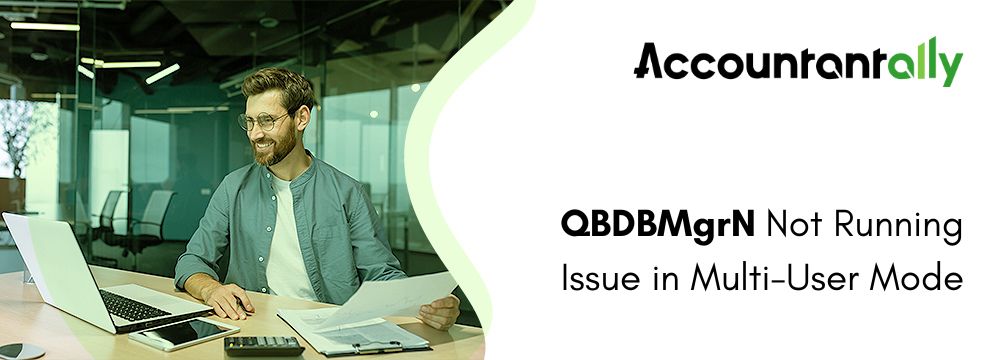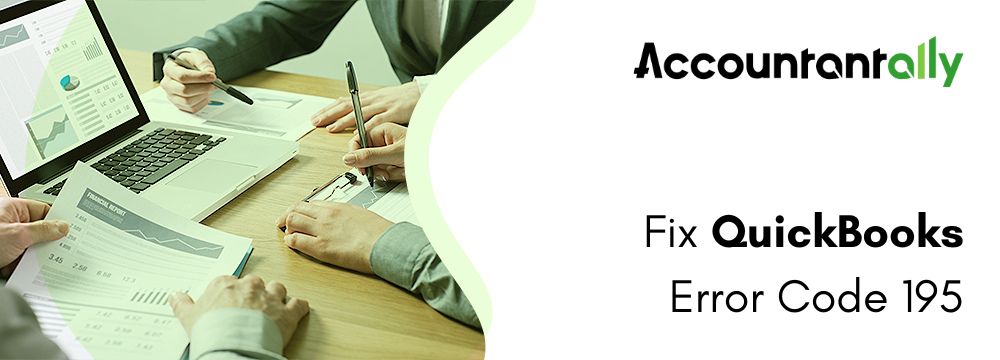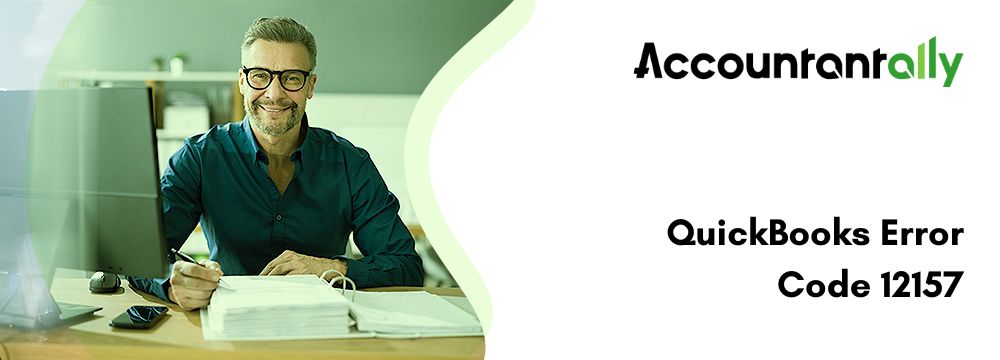QuickBooks Database Server Manager (QBDBMgrN) is an essential tool that allows multiple users to access a company file within a network. However, there are several reasons why QBDBMgrN might not run, including issues like corrupted files, outdated software, or problems with network connectivity. Users may also face difficulties if the QBDBMgrN tool or QuickBooks is not properly installed or updated.
There are several solutions available to fix this problem “QBDBMgrN Not Running on this computer”. These include configuring the database server, updating QuickBooks to the latest version, and using the QuickBooks Tool Hub to repair QuickBooks. Additional steps such as reinstalling QuickBooks or modifying configuration files may be needed. The article provides step-by-step instructions for each solution, making it easier for users to troubleshoot and resolve the issue, ensuring smooth multi-user access to QuickBooks company files.
What is QBDBMgrN?
QuickBooks Database Server Manager, or QBDBMgrN for short, is a key component of QuickBooks and allows multiple users to access a company file at once within a network. For every company file kept on the host computer, it generates a network data file (.ND).
These are the most common causes of QBDBMgrN not operating. Let’s go on to the following part to find out how to resolve this problem successfully.
Solutions for QBDBMgrN Not Running on this Computer Issue
After fixing this issue you will be able to run the QuickBooks Database Server Manager. Use the troubleshooting solutions listed below to address the QBDBMgrN not running on this computer issue.
Solution 1 – Configure QuickBooks Database Server Manager
Sometimes, general issues that may be the source of the problem can be resolved by properly configuring the database server management. To change the QuickBooks Database Server Manager configuration, follow the steps mentioned below:
- To open the Run window, press the Windows + R keys. Then, type Services.msc into the search box.
- Find the QuickBooksDBXX service by scrolling down; the XX stands for your QB Database Server Manager version.
- Double-click the service, select Automatic for the Startup Type and choose Running or Started for the Service Status.
- Moreover, you have to select Restart the Service from the First Failure drop-down box on the Recovery tab. Hit OK after doing the same for the Second and Subsequent Failures.
Once it is done, then you can reboot your PC and to check the status of the issue you can run the utility again. Even after restarting it, QBDBMgrN is not running on the server then you can restart it, now you can move to the next solution.
Solution 2 – Update QuickBooks Desktop to the Latest Version
QuickBooks Desktop updates might offer the newest features and enhancements to the program. By doing this, compatibility problems with the QB Database Server Manager can be resolved. To update it, follow the instructions below:
- Open QuickBooks Desktop, then select Update QuickBooks Desktop from the Help menu.
- Choose Update Now next, followed by checking Reset Update and clicking Get Updates.
- Reopen QuickBooks after the updates have finished downloading, then select Install Now to apply the software upgrades.
- Now launch QuickBooks again, restart your computer, and go to the QuickBooks Database Server Manager. Proceed to the next solution if, even after updating QB, QBDBMgrN is not operating.
Related Issue: QBCFMonitorService Not Running
Solution 3 – Use QuickBooks Tool Hub to Repair QuickBooks
It’s conceivable that the installation of QuickBooks Desktop is problematic or that the program is damaged. You might not be able to use the QBDBMgrN utility because of these problems. Use the QuickBooks Tool Hub to perform a QuickBooks repair in the way described below to resolve these problems:
Step 1: Download and Install QuickBooks Tool Hub
To address issues within QuickBooks the QuickBooks Tool Hub is a hub of various tools and features. To use these tools and features you can download and install the QuickBooks Tool Hub using the steps mentioned below:
- Shut down QuickBooks, download the latest version of the QuickBooks Tool Hub, and save the setup file to a location where you can easily find it on your computer.
- Note: To find the version of QB Tool Hub you currently have installed on your system, scroll down to the bottom of the Home tab. The latest version (1.6.0.5) is required.
- To install the software, next, open the QuickBooksToolHub.exe setup file you downloaded earlier, follow the steps displayed on the screen, and agree to the terms and conditions.
- After the application has finished installing, double-click the QB Tool Hub icon to start it from your Windows desktop.
- Note: If you are experiencing difficulty finding the QB Tool Hub icon, open the software by manually searching for “QuickBooks Tool Hub” in the Windows search window.
- Use the Quick Fix My application tool in step 2 after the program has been installed.
Step 2: Use the Quick Fix My Program Utility
The QuickBooks software’s Quick Fix My Program function assists in fixing common problems. To refresh QuickBooks, this program ends background processes. Successfully resolves the program’s difficulties, it also does a quick repair. To use the Quick Fix My Program tool, follow the steps that are mentioned below:
- Open the Quick Fix My Program tool by opening the QB Tool Hub, then choose it from the Program Problems section and then you can run the tool.
- Reopen QuickBooks and access your data file when the program has finished executing to see if the problems have been resolved.
However, if the QBDBMgrN not operating problem persists, use the QB Install Diagnostic tool in the next step to resolve the installation issues.
Step 3: Use the QuickBooks Install Diagnostic Utility
The application’s general installation issues can be resolved with the QuickBooks Install Diagnostic tool. To run this tool you have to follow the following steps-
- Start QB Tool Hub first, then choose the QuickBooks Install Diagnostic tool from the Installation Issues menu.
- Give the tool time to resolve the installation problems; this could take up to 20 minutes. Once the diagnostic process is finished, restart your computer, launch QuickBooks Desktop, and get your data file.
Verify that QuickBooks has the latest security updates and is running the latest version. After that, restart QB Database Server Manager and see how the problem is progressing. Proceed to the next option if this tool is still giving you trouble.
Solution 4- Clean Install QuickBooks Desktop
You can try clean installing QuickBooks Desktop if repairing QuickBooks doesn’t help in fixing the problems. In the current version, this can help in getting rid of problems that can cause the QBDBMgrN not to work properly. Follow the steps mentioned below to clean and install the software.
Step 1: Uninstall QuickBooks from the PC
By running an uninstallation process you can remove QuickBooks from your system. Ensure to back up your files and keep the product and license information handy. To uninstall QuickBooks you can follow the steps below-
- From the Windows Start menu, you can access the Control menu and then you can select the Programs and Features or Uninstall a program option.
- From the list of installed apps you can choose QuickBooks, then you can select Uninstall/Change, Remove, and then you can click Next. In case you don’t see this option, then you can sign back into Windows with the credentials of the admin account and then remove QuickBooks.
Step 2: Modify the QuickBooks Installation Folder Name
After removing QuickBooks Desktop, you can rename the installation folders to prevent QuickBooks from using the leftover installation folders. You can follow the steps below to rename the installation folders-
- In the Windows search panel, you can search for File Explorer, then open it, and then you can go to the QuickBooks company file folder.
- In one of the following locations the company file folder is usually the QuickBooks Folder that can be found,
- C:\ProgramData\Intuit\QuickBooks (year)
- C:\Users(current user)\AppData\Local\Intuit\QuickBooks (year)
- C:\Program Files\Intuit\QuickBooks (year)
- 64-bit version C:\Program Files (x86)\Intuit\QuickBooks (year)
- Then you can right-click on the folder and then you can click on Rename, and then at the end of the folder name you can add .old, and then click on Enter.
While renaming the installation folder if you get an access error message, end QuickBooks processes by following the below steps-
- Begin by right-clicking the Window Task Bar, and then you can select Task Manager, then you have to go to the processes tab.
- To sort the list you have to select the Name column header, then you have to select the following processes: QBDBMgrN.exe, QBDBMgr.exe, QBCFMonitorService.exe, and Qbw32.exe.
- Then you have to click End Process for each of the processes and then you can terminate them.
- When you see the WARNING: Terminating a process can cause undesired results… message you have to click Yes and then you have to end the process.
Step 3: Reinstall QuickBooks Desktop
It is now necessary for you to install and activate QuickBooks. First, confirm that your computer satisfies the minimal system requirements for installing QB and that the product details and license are readily available. Then, to swiftly install the software, adhere to the instructions below:
- Save the QuickBooks setup file (.exe) to a convenient spot on your computer after downloading it from the download site or the (CAMPs).
- Launch QuickBooks.exe, adhere to the on-screen instructions, agree to the license terms, and press the Next button.
- After entering your product and license numbers and clicking Next once more, make sure you are connected to the internet to continue.
- Moreover, pick Install after selecting Express Install as the Installation Type and clicking Next.
- Reopen QuickBooks and continue with the registration process after the installation is finished.
- Select the Help tab, select Activate QuickBooks Desktop, enter the Product and License Info, and follow the on-screen directions to confirm your information.
- Launch QuickBooks Database Server Manager after QuickBooks has been successfully installed and enabled. Proceed to the next solution if QuickBooks Database Server Manager is unable to launch.
Solution 5 – Reinstall the QuickBooks Database Server Manager Utility
Try reinstalling QBDBMgrN if it keeps stopping. The current QuickBooks Database Server Manager, this can help in resolving any installation issues. To uninstall and reinstall the utility, follow the instructions below:
Step 1: Uninstall QuickBooks Database Server Manager
Begin by uninstalling the current QuickBooks Database Server version by following the steps mentioned below:
- To open the Run window, press the Windows + R keyboard shortcut. In the Run dialog box, type appwiz.cpl.
- Then you have to click OK, then you have to select the QuickBooks Database Server Manager, and then you have to click the Uninstall/Change option.
Proceed to the next step and rename the installation folder after removing QuickBooks Database Server Manager.
Step 2: Modify the Installation Folder Name
To rename the installation folder, follow the steps mentioned below:
- Now you have to move to the Installation Folder location (for example, C:\Program Files\Common Files\Intuit), then use the keyboard shortcut Windows + R.
- Moreover, right-click the folder, copy and paste the folder’s location, and press Enter.
- Finally, select Rename. To apply the changes, add “.OLD” to the end of the file name and press Enter.
Proceed to the next section and reinstall QBDBMgrN after renaming the folder.
Step 3: Install QB Database Server Manager
- Installing QuickBooks Database Server Manager on the system is the last step. To begin the installation process, follow the instructions mentioned below:
- On your server PC, first close all open programs before downloading and running the installed Setup_QuickBooks.exe file.
- Keep your product and license information close at hand while you follow the on-screen instructions.
- Next, choose the Installation Type that best suits your network configuration by selecting Custom or Network Options, then click Next.
- Click Next, then select one of the two options below to install the Database Server Manager:
- Select the option that says, “I’ll be using QuickBooks Desktop on this computer, AND I’ll be storing…” if you want QB Database Server Manager and QuickBooks Desktop on your server PC.
- On the other side, choose the “I will NOT be using QuickBooks Desktop…” option if all you want on your server computer is QB Database Server Manager.
- Note: No company data will be overwritten if QBDT is already installed on your server PC.
- After choosing your preferred option, click Install and give the process some time to end.
Solution 6 – Run QBDataServiceUserXX with Admin Rights
The distinct QuickBooks Database Manager service is managed by the QBDataServiceUser account. Any user who logs in to Windows can access services provided by QBDBMgrN thanks to this account. Issues with the utility may occur if this user account is used without the lack of proper permissions. As a result, make sure the QBDataServiceUser account has admin privileges by doing the following:
- You can close QuickBooks, open the Windows Start menu, and then access the Control Panel.
- Then you have to select User Accounts, and find the QBDataServiceUserXX for your QuickBooks version as follows-
- QuickBooks 2020: QuickBooksDB30
- QuickBooks 2019: QuickBooksDB29
- QuickBooks 2018: QuickBooksDB28
- Then you have to select Change Account Type, then you can choose Administrator, and then you can click Change Account Type, and then click on Apply.
Proceed to the next solution if QBDBMgrN is still not operating on the system.
Solution 7 – Recreate QBDataServiceUserXX
When the QBDataServiceUserXX account is damaged, it can cause issues with the QuickBooks Database Server Manager. Thus, you must recreate QBDataServiceUserXX as follows:
- You can close QuickBooks and hit the Windows + R keys to open the Run window.\
- Enter services.msc into the command window and hit Return.
- Also, right-click the service that matches your QB version and select Properties.
- QuickBooks 2020: QuickBooksDB30
- QuickBooks 2019: QuickBooksDB29
- QuickBooks 2018: QuickBooksDB28
- Select This Account as the service under the Log On tab now. As only some configurations enable it to work on the local system, do not choose Local System.
- Next, follow the instructions below to delete qbdataserviceuserXX:
- To open the Run window, press the Windows + R keys. In the text box that appears, type Control Panel.
- After choosing OK, go to User Accounts and choose Remove User Account.
- Finally, you can select the qbdataserviceuserXX that matches your QuickBooks version and then click on Delete.
- After that, restart QuickBooks and enable hosting. If that hosting was previously enabled, switch it off and back on.
- Select the OK button to open QB Database Server Manager when asked to run QuickBooks Database Server Manager.
- Then you can scan the file, which will recreate the QBDataServiceUser.
Restart both QB Database Server Manager and QuickBooks after the process is complete. As you run QBDBMgrN, see if the problems have been fixed. If not, proceed to the next solution.
Read More: Fix QuickBooks Error H202 and H505
Reasons Why QBDBMgrN Not Running
You may not be able to open QB Database Server Manager for several reasons. This difficulty may be caused by issues with QuickBooks or the QBDBMgrN tool. To make sure you can resolve this problem appropriately, you must understand why it occurs. Before starting the troubleshooting procedure, familiarize yourself with the primary triggers listed below:
- There could be corruption or damage to the QuickBooks Database Server Manager.
- The QB Database Server Manager version you are using is out of date.
- QBDBMgrN may not work properly because your QB Desktop is out of date.
- Important configuration files may be corrupted or damaged, including the.ND and.TLG files.
- The anti-virus software or the Windows firewall may prevent QB from accessing the internet.
- It’s possible that your QuickBooks Desktop installation is incorrect or that the QuickBooks software is damaged.
- The QBDataServiceUser account cannot be accessed with admin privileges.
- Your QuickBoooks data files may be corrupted or damaged, which would affect data integrity and hosting.
- Another possible cause of this problem could be damage to the network path leading to the server.
- QuickBooks’ hosting settings may be incorrect.
- While running QuickBooks and the QuickBooks Database Server Manager there are other network and internet connectivity issues.
Conclusion
The QuickBooks multi-user mode “QBDBMgrN Not Running” problem prevents multiple users from accessing company files. Make sure the QuickBooks Database Server Manager is correctly installed and operational, check the service status, update both QuickBooks and its database manager, and double-check your network and firewall configurations in order to fix this. Regular maintenance and updates can prevent future problems and restore efficient multi-user access and smooth business operations.







